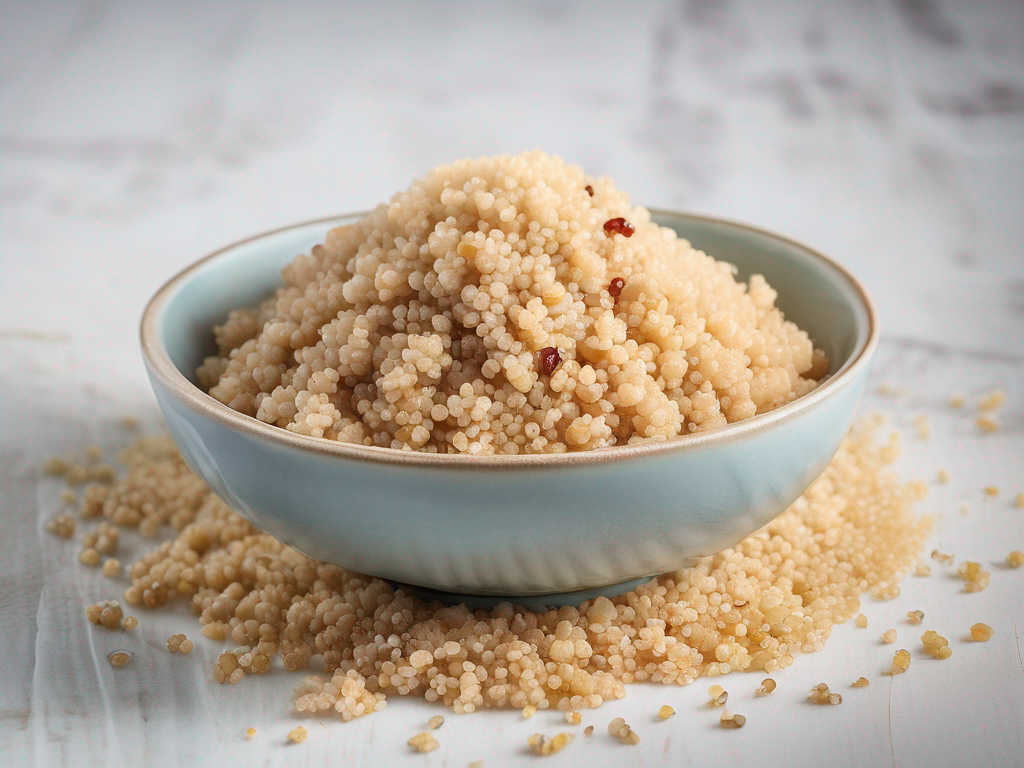
Is My Quinoa Still Safe to Eat? How to Tell if Your Quinoa Has Gone Bad
Get Your Free Food Safety Cheat Sheet
30 most common foods with instant answers. Print it and stick it on your fridge—completely free!
Is My Quinoa Still Safe to Eat? How to Tell if Your Quinoa Has Gone Bad
Quinoa is a popular and nutritious whole grain that is enjoyed by many for its versatility and health benefits. Whether you use it as a base for salads, in soups, or as a side dish, quinoa is a staple in many kitchens. However, like any food product, quinoa can go bad if not stored properly or if it's past its prime. In this blog post, we will explore how to tell if your quinoa has gone bad and provide you with some tips on how to store it correctly to prolong its shelf life. (Quinoa)
Signs of Spoiled Quinoa
When it comes to quinoa, it's essential to be able to recognize the signs of spoilage. Here are some indicators that your quinoa may have gone bad:
1. Unpleasant Odor
If your quinoa has a sour, rancid, or generally unpleasant smell, it's a clear sign that it has gone bad. Fresh quinoa should have a mild, nutty aroma.
2. Mold or Discoloration
Inspect your quinoa for any signs of mold growth or discoloration. If you notice any black, green, or pink spots on the grains, it's best to discard the quinoa.
3. Strange Texture
Spoiled quinoa may feel sticky, slimy, or have an off texture. Fresh quinoa should have a fluffy and slightly chewy texture when cooked.
4. Bitter Taste
If your cooked quinoa tastes bitter or off, it's a strong indication that it has spoiled. Fresh quinoa should have a mild, slightly nutty flavor.
5. Insects or Pests
If you find any insects or pests in your quinoa, it's best to throw it away as they can contaminate the grains and make them unsafe to eat.
Proper Storage Tips for Quinoa
To ensure that your quinoa stays fresh and safe to eat for as long as possible, follow these storage tips:
1. Store in an Airtight Container
Transfer your quinoa from its original packaging to an airtight container to protect it from moisture, air, and pests.
2. Keep in a Cool, Dry Place
Store your quinoa in a cool, dry pantry or cupboard away from heat sources and direct sunlight. Avoid storing it near appliances that generate heat, such as the stove or oven.
3. Check the Expiration Date
Always check the expiration date on the package before using your quinoa. If it's past the expiration date, it's best to discard it to avoid any risk of spoilage.
4. Freeze for Long-Term Storage
If you have a large quantity of quinoa and want to extend its shelf life, consider freezing it in a sealed freezer bag or airtight container. Frozen quinoa can last for several months.
5. Use a Vacuum Sealer
For even longer storage, consider using a vacuum sealer to remove air from the packaging and seal in the freshness of your quinoa.
Conclusion
In conclusion, it's essential to be able to recognize the signs of spoilage in quinoa to ensure that you are consuming safe and fresh grains. By following proper storage guidelines and being mindful of the indicators of bad quinoa, you can enjoy this nutritious food product without any concerns. Remember to trust your senses when it comes to assessing the quality of your quinoa, and when in doubt, it's always best to err on the side of caution and discard any questionable batches. Enjoy your quinoa dishes with peace of mind knowing that you are practicing safe food handling and storage techniques. (Quinoa)
Authoritative Food Safety References
These agencies and university labs inform every tip and health precaution we publish.
USDA FoodKeeper – Cold Storage Guidelines
Official refrigerator, freezer, and pantry timelines maintained by the U.S. Department of Agriculture.
Visit USDA FoodKeeperFDA Produce Safety Rule & Grower Guidance
Field-to-fridge handling practices that prevent contamination of fruits, vegetables, and leafy greens.
Visit FDA Produce SafetyCDC Foodborne Illness Prevention Hub
Surveillance-backed guidance on pathogens, symptoms, and steps to reduce foodborne illness risk.
Visit CDC Food SafetyUC Davis Postharvest Technology Center
University research detailing optimal storage atmospheres for produce after harvest.
Visit UC Davis PostharvestPenn State Extension – Home Food Preservation & Safety
Peer-reviewed extension bulletins on safe canning, chilling, and reheating practices.
Visit Penn State ExtensionGet Your Free Food Safety Cheat Sheet
30 most common foods with instant answers. Print it and stick it on your fridge—completely free! Want more? Upgrade to the complete guide with 70+ foods.
Scan your food directly and get instant safety info using our AI-powered camera feature.